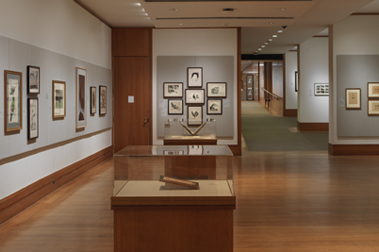A Darktown Trial -- The Judge's Charge
Publisher Currier & Ives American
Not on view
The late nineteenth-century Darktown prints by Currier & Ives depict racist stereotypes that are offensive and disturbing. The Metropolitan Museum of Art preserves such works to shed light on their historical context and to enable the study and evaluation of racism.
This print depicts caricatured Black (African American) men in a courtroom. At far right, a bald, older, bespectacled judge stands at his desk (on a low dais) and gestures with his right hand as he addresses the court. On the floor in front of him, seated at a low desk, a man (dressed in a brown jacket, bow tie, and plaid pants) looks up as he holds a quill pen in his right hand. At center, a man (the accused dressed in a checked shirt) stands in a low witness box and faces the judge; a uniformed policeman is seated on a low chair beside him. At left, a thin man in a suit approaches; he holds a red book. In the background, two rows of men (variously attired; one wears a bandana eyepatch) are seated in the jury box; each is wide-eyed and open mouthed. On the wall (right background), is a framed portrait of the judge.The title and caption are imprinted in the bottom margin. The print's caption refers to the judge's statement to the jury about accounting for all the missing (possibly stolen) chickens.
Nathaniel Currier (1813–1888), whose successful New York-based lithography firm began in 1835, produced thousands of prints in various sizes that together create a vivid panorama of mid-to-late nineteenth century American life and its history. People eagerly acquired such lithographs featuring picturesque scenery, rural and city views, ships, railroads, portraits, hunting and fishing scenes, domestic life and numerous other subjects, as an inexpensive way to decorate their homes or business establishments. As the firm expanded, Nathaniel included his younger brother Charles in the business. In 1857, James Merritt Ives (1824–1895), the firm's accountant since 1852 and Charles's brother-in-law, was made a business partner. Subsequently renamed Currier & Ives, the firm continued via their successors until 1907.

